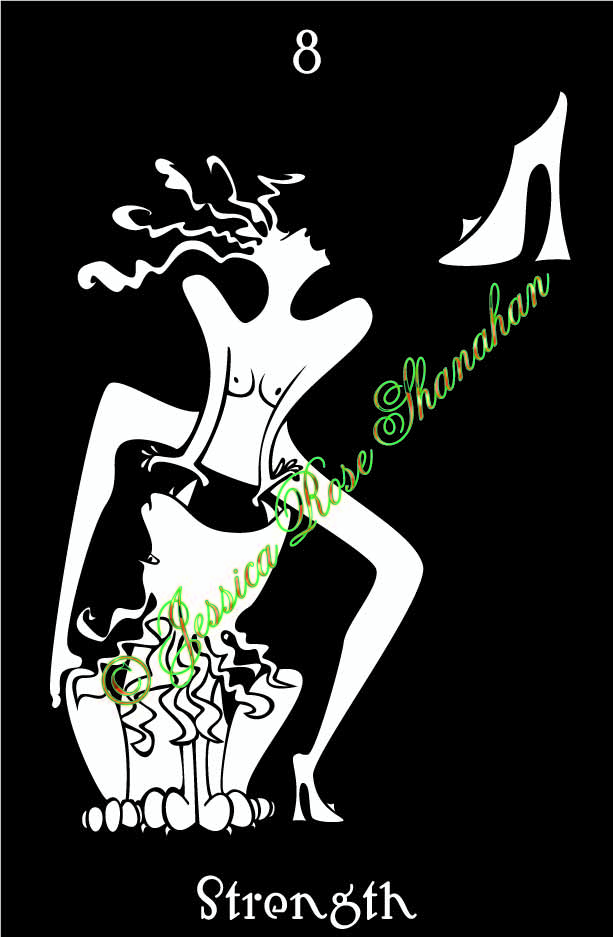 [Strength is one of the first cards I illustrated, back when I was drawing with black ink and a horsehair brush, living in a tiny cabin in Alaska, riding a bicycle everywhere I went. I have always been quite satisfied with her appearance.]
[Strength is one of the first cards I illustrated, back when I was drawing with black ink and a horsehair brush, living in a tiny cabin in Alaska, riding a bicycle everywhere I went. I have always been quite satisfied with her appearance.]
Right-side-up: Strength, courage, patience, control, compassion
Up-side-down: Weakness, self-doubt, lack of self-discipline
In the Rider-Waite-Smith deck and its plethora of clones, Strength is depicted as a women gently opening the jaws of a lion. The lion, a symbol of animal passion and desire, is sticking out his tongue, which he would not do if he was preparing to bite. This lion is happy to submit; the woman has successfully tamed the beast. This card is obviously not focused on pure physical strength. The woman overcomes the lion with a quiet, inner strength. When placed with its toothed mouth gaping between the women’s legs, the lion becomes a seductive reference to women’s power: the inner strength and perseverance needed to overcome oppression.
The lion’s position also becomes a subtle reference to the “vagina dentata,” a term which Sigmund Freud is often credited with coining. Literally, it means “female genitalia with teeth.” This image of the toothed vagina captured what Freud described (or experienced) as fear of castration, which he argued all boys (or men) feel upon first seeing female genitalia. Freud wrote:
“Probably no male human being is spared the terrifying shock of threatened castration at the sight of the female genitals.” (Three essays on the theory of sexuality. Trans. James Strachey, Basic Books: New York, 1962, p. 216.)
On the other end of the spectrum, Camille Paglia wrote in Sexual Personae:
“Metaphorically, every vagina has secret teeth, for the male exits as less than when he entered.” (p. 13)
In ancient civilizations, women do not only give life, they take it also. Dark Goddesses are both the manifestation of the warm, nurturing womb and the devouring gateway to the afterlife. The Norse Goddess Hel ruled over Helheim, whose gateway was a vagina. The Christians, who adopted Hel’s name into the after-world of Hell, often depicted Hell’s gateway lined with teeth and looking very much like female genitalia.
While Freud’s argument for the universality of this fear may seem ridiculous to most of us, the image is prevalent through world mythology. Various cultures have folk tales about women with toothed vaginas. These are possibly told as cautionary tales warning of the dangers of sex with strange women and to discourage the act of rape, tho the tales are more predominant in the more patriarchal societies— perhaps representing man’s fear of being conquered by what he seeks to oppress.
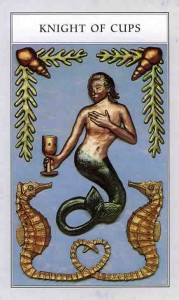 Illustrator: Helen Jones
Illustrator: Helen Jones



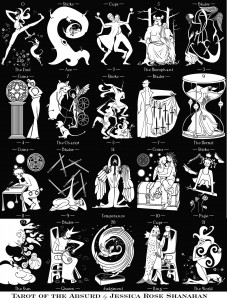

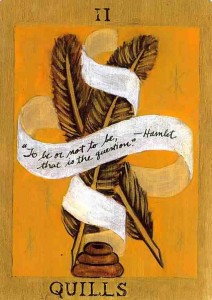

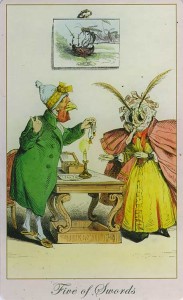

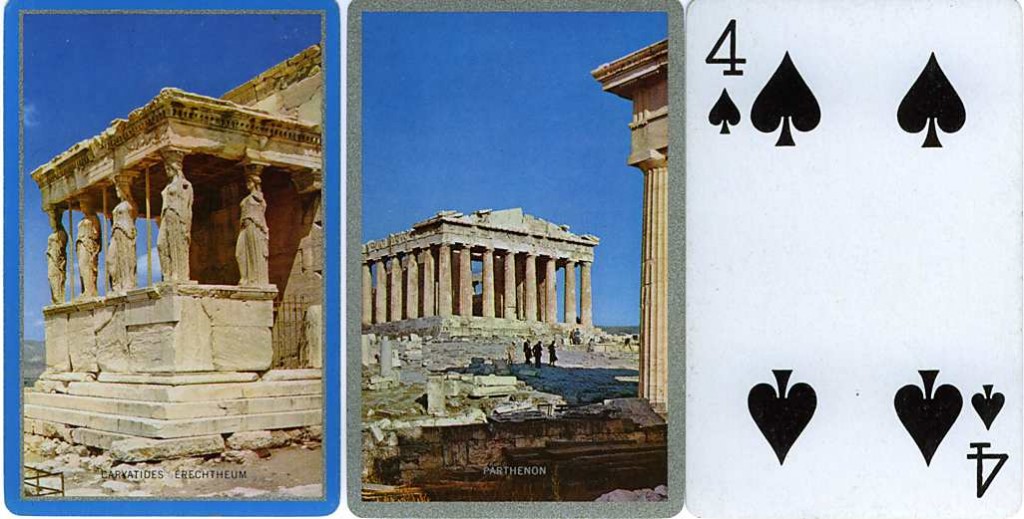


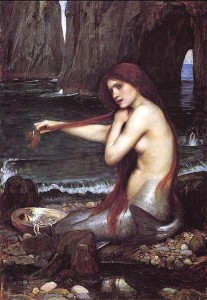
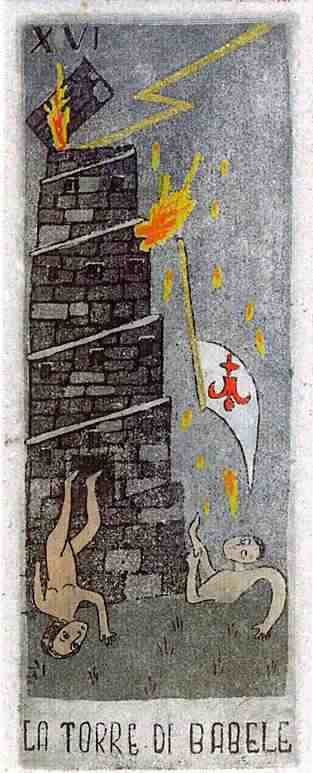
 [Strength is one of the first cards I illustrated, back when I was drawing with black ink and a horsehair brush, living in a tiny cabin in Alaska, riding a bicycle everywhere I went. I have always been quite satisfied with her appearance.]
[Strength is one of the first cards I illustrated, back when I was drawing with black ink and a horsehair brush, living in a tiny cabin in Alaska, riding a bicycle everywhere I went. I have always been quite satisfied with her appearance.]